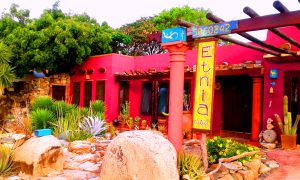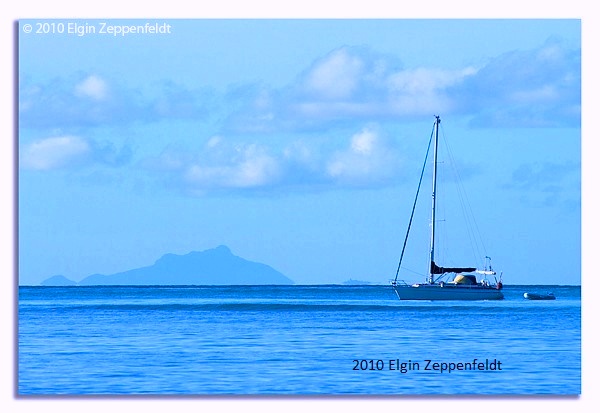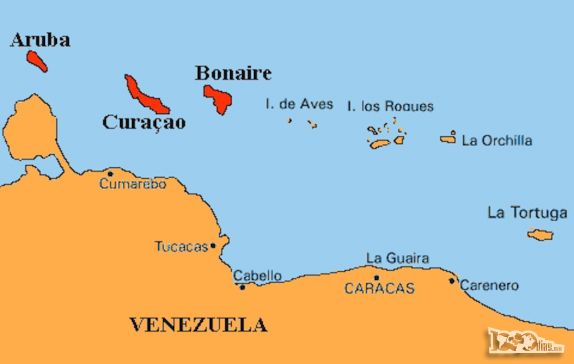Booking a magical glimpse inside Etnia Nativa is easy!
Article by Etnia Nativa call us 592 2702 and book your experience!

The narrative of Etnia Nativa (which means “Native Ethnicity”) emphasizes the importance of preserving and reclaiming Aruba’s cultural identity and heritage. Through this platform, it offers an authentic Indigenous perspective, educates the public, and encourages readers to embrace the role of “island caretakers.”
In this new episode, we explore a shared heritage that transcends borders, linking Aruba and Venezuela.

Though our countries were colonized by different European powers, their common Indigenous roots reach as far as the mountains of Yaracuy.
In the past, contact with the mainland was a Caquetio family affair—ancestral ties and longstanding tribal relationships laid the foundation for a deep, enduring bond between the island and the continent.
Historically, Aruba functioned both as a farming outpost and a key supplier, with Venezuela as its principal trading partner. Early interactions were shaped by the Spanish encomienda system, which linked both regions through a common colonial experience. Their close proximity—just 27 kilometers apart—fostered strong maritime ties. On clear days, Santa Ana Hill in Paraguaná, Venezuela, is visible from Aruba’s southern shores, a powerful reminder of their geographical and historical closeness.

In those early days, sea routes were the only way to reach Aruba, and continuous movement across the water helped preserve kinship ties. These intra-tribal trade routes facilitated economic connections that became especially important during times of hardship—such as droughts, famine, crop failures, or hurricanes—when support from the mainland was crucial for the island’s survival.
A new chapter began in the mid-17th century when Aruba was seized by the Dutch. Despite the shift in colonial governance, trade between the islanders and mainlanders persisted, sustaining vibrant cross-water interactions. Aruba became part of the Dutch West India Company (WIC) network, later evolving into a member of the Netherlands Antilles after World War II, and today stands as an autonomous country within the Kingdom of the Netherlands. Venezuela, meanwhile, remained under Spanish rule until achieving independence in the 19th century.
Due to its strategic location, Aruba also became a stopover for European ships in route to the Venezuelan coast. It played a key role in the Caribbean’s maritime networks, further reinforcing its regional importance.
In the 20th century, ties between Aruba and Venezuela deepened significantly during Venezuela’s oil boom. Aruba became a critical hub for refining Venezuelan crude oil with the establishment of the Lago Oil & Transport Company in San Nicolás. This development fueled Aruba’s economic growth and solidified a vital energy alliance between the two territories.
Trade expanded beyond oil to include commodities, consumer goods, and services—reinforcing a relationship of economic interdependence. But the connection between Aruba and Venezuela goes far deeper than economics.
A continuous cultural exchange has helped shape a shared Caribbean identity—reflected in music, cuisine, dance, traditional medicine, religion, and other forms of artistic and spiritual expression.
Historical Footprints: From El Carrizal to Tara Tara, Coro, and Adicora (Ricla in the Papiamento language)
One particularly significant example is El Carrizal, a town in Venezuela’s Falcón State. Established during the colonial era as part of the Tara Tara complex, it was administered by Catholic priests who maintained strong ties with the native communities of Aruba.
Historical records suggest that Caquetio nobles from Aruba— Oruba at that time—were invited to migrate to El Carrizal to teach traditional crafts and skills. This interregional migration further deepened the cultural and spiritual bonds between the island and the mainland.
Check out our episode 240: “Tara Tara”, which stands as a powerful testament to these enduring ties.
If you enjoyed learning about our ancestral stories and want to explore the true identity of the Aruban people firsthand, we invite you to visit Etnia Nativa—the only “living museum” of its kind in the Caribbean, reflecting the island’s rich mestizaje (cultural blending).
Founded in 1994, Etnia Nativa’s creator has been a cultural pioneer, co-founding key institutions such as Aruba’s National Park, the Archaeological Museum, several artisan foundations, and other community-based initiatives.
But Etnia Nativa isn’t just a place—it’s a gateway. Quietly tucked away near the high-rise hotels, this private residence also serves as a cultural sanctuary that most tourists never discover. And that’s the magic. It’s intentionally exclusive, welcoming only those with a genuine curiosity and a thirst for authentic discovery.
Connect with the spirit and soul of Aruba’s ancient heritage through a truly one-of-a-kind experience. Whats App +297 592 2702 etnianativa03@gmail.com















